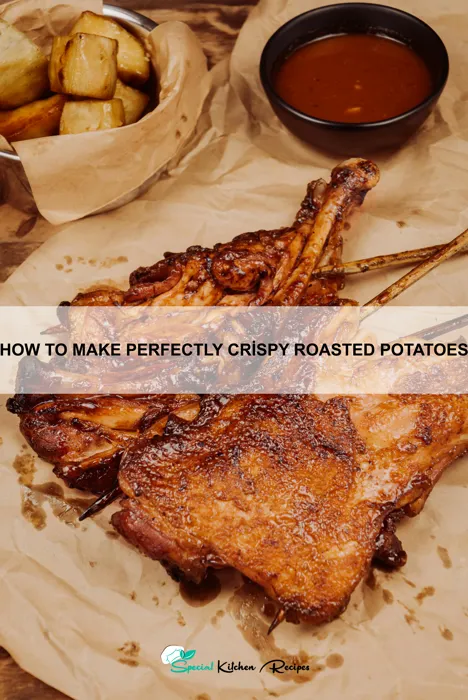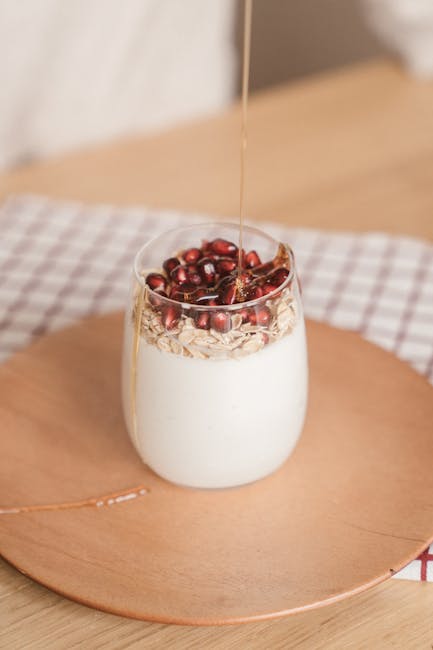The humble potato, Solanum tuberosum, boasts a surprisingly rich history, far exceeding its reputation as a simple side dish. Originating in the Andes Mountains of South America, potatoes were cultivated by indigenous populations for thousands of years before their introduction to the rest of the world. Spanish conquistadors brought potatoes back to Europe in the 16th century, initially met with suspicion and even fear. However, their nutritional value and resilience to harsh conditions gradually won over populations, leading to their widespread adoption across the globe. Today, potatoes are the world’s fourth largest food crop, with an estimated 367 million tons produced annually, a testament to their enduring popularity.
While boiled and mashed potatoes found early favor, the art of achieving perfectly crispy roasted potatoes is a more recent development, intricately linked to the evolution of cooking technologies. The ability to achieve that coveted exterior crunch and fluffy interior relies heavily on understanding starch behavior and heat transfer. High heat is key, encouraging the Maillard reaction – a chemical process that browns the surface and creates complex flavors – and the evaporation of moisture, crucial for crispiness. Interestingly, the type of potato used significantly impacts the outcome; starchy varieties like russets are preferred for their ability to crisp up beautifully, while waxy potatoes tend to steam rather than crisp.
Roasted potatoes hold significant cultural importance worldwide. In many cultures, they are a staple holiday dish, symbolizing abundance and comfort. From the classic roast dinners of Britain to the hearty patatas bravas of Spain and the flavorful variations found across Asia, roasted potatoes have seamlessly integrated into diverse culinary traditions. Their versatility allows them to be seasoned and flavored in countless ways, reflecting local tastes and preferences. The simple act of roasting a potato transcends mere cooking; it becomes a celebration of culinary creativity and a connection to a rich agricultural heritage, showcasing the incredible journey of this humble root vegetable from the Andes to dinner tables worldwide.
Ingredients and Measurements
The key to perfectly crispy roasted potatoes lies not just in the cooking method, but also in the careful selection and measurement of your ingredients. Using the right amounts ensures even cooking and optimal crispiness.
For this recipe, we’ll be using 2 pounds (900g) of Yukon Gold potatoes. Yukon Golds are ideal because of their slightly waxy texture, which holds up well during roasting and produces a fluffy interior. Russet potatoes can also be used, but they tend to be drier. Avoid using potatoes that are too starchy, like red potatoes, as they may become gummy instead of crispy.
Thoroughly wash and scrub the potatoes before cutting. Any remaining dirt can affect the browning process. Once clean, cut the potatoes into roughly 1-inch (2.5cm) pieces. Consistency in size is crucial for even cooking; uniformly sized pieces will roast at the same rate, ensuring all potatoes reach peak crispiness simultaneously. If you have potatoes of varying sizes, it’s best to sort them before cutting to ensure even cooking.
Next, we’ll need 2 tablespoons (30ml) of olive oil. A high-quality extra virgin olive oil adds flavor and aids in achieving that beautiful golden-brown color. Avoid using too much oil, as this can lead to soggy potatoes. You can substitute with other neutral-flavored oils like canola or vegetable oil.
Seasoning is paramount. We will use 1 teaspoon (5g) of kosher salt and 1/2 teaspoon (2.5g) of freshly ground black pepper. Kosher salt is preferred for its larger crystals which distribute more evenly. Feel free to experiment with other seasonings like garlic powder (1 teaspoon), paprika (1/2 teaspoon), or onion powder (1/2 teaspoon). Add your seasonings after the potatoes are dry to ensure they adhere properly. Don’t add seasoning until after the potatoes have been thoroughly dried. Adding seasoning to wet potatoes will dilute the flavor.
Finally, for extra crispiness, we recommend adding 1 tablespoon of cornstarch or arrowroot powder after tossing the potatoes with the oil and seasonings. This helps to absorb excess moisture and create a beautifully crisp exterior. Toss gently to ensure even coating of the potatoes. Avoid overcrowding the pan, as this can lead to steaming rather than roasting.
Equipment List
Creating perfectly crispy roasted potatoes requires the right tools. While you might be able to improvise, having the correct equipment will significantly improve your results and make the process easier. Below is a list of essential and recommended items, with explanations to guide you.
1. Large Mixing Bowls (2): You’ll need at least two large mixing bowls, ideally one for washing and parboiling the potatoes (approximately 8-quart capacity) and another for tossing them in the oil and seasonings (6-quart capacity will suffice). Using separate bowls prevents cross-contamination of flavors and ensures efficient workflow.
2. Potato Ricer (Optional, but Recommended): While not strictly necessary, a potato ricer helps create a wonderfully fluffy interior to your potatoes. If you don’t own one, a sturdy potato masher will work, but be careful not to over-mash, which can lead to mushy potatoes. The ricer gently breaks down the potato structure without destroying it.
3. Large Baking Sheet (or Two): A heavy-duty, rimmed baking sheet (at least 18 x 13 inches) is crucial for even roasting. Avoid overcrowding the sheet; this will steam the potatoes instead of crisping them. If you’re making a large batch, use two baking sheets. Using a dark-colored baking sheet will also help with browning.
4. Measuring Cups and Spoons: Accurate measurements are key for consistent results. Having a set of measuring cups (1 cup, ½ cup, ¼ cup, etc.) and spoons (1 tbsp, 1 tsp, ½ tsp, etc.) will help ensure you achieve the perfect balance of oil and seasoning.
5. Whisk or Fork: A whisk is ideal for thoroughly coating the potatoes in oil and seasoning, ensuring even browning. A fork will also work, but a whisk provides better distribution. Choose whichever you’re most comfortable using.
6. Tongs or Spatula: These are essential for turning the potatoes during roasting and transferring them from the baking sheet to a serving dish. Tongs are especially useful for preventing damage to the potatoes.
7. Oven Thermometer (Highly Recommended): An oven thermometer will ensure your oven is at the correct temperature, which is crucial for achieving perfectly crispy potatoes. Oven temperatures can vary, so an accurate thermometer eliminates guesswork.
8. Colander or Sieve: Necessary for draining the potatoes after parboiling. Choose one that is large enough to comfortably hold your potatoes without overcrowding.
9. Paper Towels: Use paper towels to thoroughly dry the potatoes after parboiling. Excess moisture is the enemy of crispy potatoes.
Potato Preparation (Washing, Peeling, Cutting)
The key to achieving perfectly crispy roasted potatoes lies in proper preparation. Begin with selecting the right potatoes. Starchy potatoes, such as Russets or Idaho potatoes, are ideal for roasting due to their high starch content, which contributes to a fluffy interior and crispy exterior. Avoid waxy potatoes like red potatoes, as they tend to steam rather than crisp.
Start by thoroughly washing the potatoes under cold running water. Scrub the skins with a vegetable brush to remove any dirt or debris. This is crucial for both hygiene and achieving a clean, crisp result. Don’t worry about completely removing every speck of soil; a slightly rough surface can even enhance browning.
Next, decide whether to peel your potatoes or not. For maximum crispiness, leaving the skins on is generally recommended. The skins add flavor and texture, and they help the potatoes brown beautifully in the oven. However, if you prefer peeled potatoes, use a vegetable peeler to remove the skin evenly. Make sure to remove any blemishes or green spots, as these can impart a bitter taste.
Once washed and peeled (if applicable), cut the potatoes into uniformly sized pieces. Consistency in size ensures even cooking. Aim for roughly 1-inch to 1.5-inch cubes or wedges, depending on your preference. If the pieces are too large, the insides may remain undercooked while the outsides burn; if they are too small, they may dry out and become overly crispy.
After cutting, it’s important to rinse the potatoes again under cold water. This step helps remove excess starch, which can prevent browning and result in soggy potatoes. Drain the potatoes thoroughly in a colander. Pat them dry with clean kitchen towels or paper towels to further remove excess moisture. This is a critical step for achieving that sought-after crispy exterior.
Finally, before proceeding to the roasting stage, consider soaking the potatoes for about 30 minutes in cold water. This step is optional but helps to remove even more starch and can lead to extra crispy results. Make sure to drain and dry them thoroughly before seasoning and roasting.
Soaking (Optional, but Recommended)
While not strictly necessary, soaking your potatoes before roasting significantly contributes to achieving that ultimate crispy exterior and fluffy interior. This step is particularly beneficial if you’re using starchy potatoes like Russets or Idaho potatoes, which tend to absorb more oil and become less crisp.
The soaking process helps remove excess starch from the potatoes’ surface. This starch is the enemy of crispiness! When exposed to high heat, excess starch can steam the potatoes rather than allowing for proper browning and crisping. By removing this starch, you’re creating a surface that’s much more receptive to browning and developing that desirable crunchy texture.
How to Soak Your Potatoes: Peel and cut your potatoes into your desired shape and size (roughly 1-inch cubes are ideal for even cooking). Place the cut potatoes into a large bowl and cover them completely with cold water. Add a generous tablespoon of white vinegar to the water. The vinegar helps to further inhibit starch from sticking to the surface.
Soaking Time: Let the potatoes soak for at least 30 minutes, but ideally for 1-2 hours, or even longer if you have the time. The longer they soak, the crispier they’ll be. For best results, soak them overnight in the refrigerator. Do not soak for longer than 2 hours at room temperature to prevent bacterial growth.
After soaking, thoroughly drain the potatoes and pat them completely dry with clean kitchen towels or paper towels. Thorough drying is crucial. Any remaining moisture will steam the potatoes instead of crisping them. You may even want to let them air dry for a short time after patting them dry. This extra step will help ensure maximum crispiness.
Important Note: Soaking is less crucial for potatoes with lower starch content, such as Yukon Golds or red potatoes. However, even with these varieties, a short soak (30 minutes) can still improve the final result. Experiment to find what works best for your preferred potato type and desired level of crispiness.
Seasoning and Coating
Seasoning and coating your potatoes correctly is crucial for achieving that ultimate crispy exterior. Don’t skimp on this step – it’s where the magic happens! We’ll be using a combination of techniques to ensure maximum flavor and crunch.
First, thoroughly dry your potatoes. This is arguably the most important step. Excess moisture is the enemy of crispiness. Pat them down aggressively with paper towels until they are completely dry. You can even let them air dry for a bit after washing if you have the time.
Next, we’ll season generously. For a 2 lb batch of potatoes (about 4 medium-sized), I recommend using the following: 2 teaspoons of kosher salt, 1 teaspoon of freshly ground black pepper, and 1 teaspoon of paprika (smoked paprika adds a delicious depth of flavor). Feel free to experiment with other spices – garlic powder, onion powder, cayenne pepper, or even herbs like rosemary or thyme all work wonderfully. Evenly distribute the seasoning, ensuring all surfaces of the potatoes are coated.
Now for the coating. We’ll use a combination of oil and starch for optimal crispiness. Start with 2 tablespoons of your preferred high-smoke-point oil (such as canola, vegetable, or avocado oil). Add the oil directly to the seasoned potatoes and toss gently to coat. Avoid using too much oil, as this can lead to soggy potatoes.
Finally, we’ll incorporate a starch. 2 tablespoons of cornstarch or arrowroot powder works perfectly. Again, gently toss the potatoes until they are evenly coated in the oil and starch mixture. The starch helps to create a barrier that prevents moisture from escaping and promotes browning and crispiness.
Professional Tip: For extra crispy potatoes, consider parboiling the potatoes for 5-7 minutes before seasoning and coating. This helps to create a fluffy interior while still maintaining a crispy exterior. Just make sure to dry them incredibly well after parboiling!
Important Note: Don’t overcrowd the pan when roasting. This will lower the temperature and steam the potatoes instead of crisping them. Work in batches if necessary to ensure even cooking and maximum crispiness.
Roasting Method (Oven Temperature, Time, and Arrangement)
Achieving perfectly crispy roasted potatoes hinges on the right roasting method. This involves selecting the optimal oven temperature, roasting time, and potato arrangement for even cooking and maximum crispiness.
Oven Temperature: The ideal oven temperature for crispy roasted potatoes is 400°F (200°C). This high heat encourages the potatoes to crisp up on the outside while cooking through on the inside. Lower temperatures will lead to soggy potatoes, while temperatures much higher risk burning the outside before the inside is cooked.
Roasting Time: The roasting time depends on the size and type of potato you’re using. For medium-sized potatoes (about 2 inches in diameter), plan for 45-60 minutes. Smaller potatoes will require less time (around 30-45 minutes), while larger potatoes may need up to 75 minutes. The key is to check for doneness frequently. You should be able to easily pierce a potato with a fork. If the potatoes are browning too quickly but aren’t cooked through, reduce the oven temperature slightly.
Arrangement on the Baking Sheet: Proper arrangement is crucial for even cooking and maximum crispiness. Avoid overcrowding the baking sheet. Overcrowding prevents proper air circulation, leading to steaming instead of roasting and resulting in soft, not crispy, potatoes. Arrange the potatoes in a single layer, ensuring they’re not touching each other as much as possible. This allows for even heat distribution and promotes even browning. If you have a large quantity of potatoes, use multiple baking sheets.
Professional Tip: For extra crispy potatoes, consider parboiling them for 5-7 minutes before roasting. This helps to cook the potatoes slightly, allowing them to crisp up more readily in the oven. Make sure to thoroughly dry the potatoes with a clean kitchen towel after parboiling to remove excess moisture. This step is essential for achieving that perfect crispy exterior.
Monitoring and Adjustments: Throughout the roasting process, keep an eye on your potatoes. If they’re browning too quickly, you can tent the baking sheet loosely with foil to slow down the browning. Conversely, if they’re not browning enough, you can increase the oven temperature slightly or remove the foil. Taste test a potato to ensure it’s cooked through and crispy to your liking.
Recommendations
For perfectly crispy roasted potatoes, thorough drying of the potatoes before roasting is paramount. Pat them dry with paper towels or a clean kitchen towel to remove excess moisture, which will prevent steaming and result in softer potatoes. Don’t skip this crucial step!
Experiment with different types of potatoes. Russets are classic for their fluffy interior and crispy exterior, but Yukon Golds offer a creamy texture and beautiful golden color. Consider adding herbs like rosemary, thyme, or oregano for extra flavor. A sprinkle of garlic powder or onion powder also enhances the taste profile.
Serving suggestions are endless! These crispy roasted potatoes are a fantastic side dish for almost any main course. They pair beautifully with roast chicken, steak, grilled salmon, or even vegetarian dishes like lentil stew. They are also delicious on their own as a snack or appetizer.
Storage is key to maintaining crispiness. Allow the potatoes to cool completely before storing them in an airtight container in the refrigerator. They will last for up to 3-4 days. Reheating is best done in a preheated oven at 375°F (190°C) for about 10-15 minutes, or until heated through and crispy again. Avoid microwaving, as this can make them soggy.
Nutritional Information (per serving, approximate): This will vary depending on the size of the potatoes and the added fats and seasonings. However, a typical serving (about 1 cup) might contain approximately 200-250 calories, 10-15g of fat, 25-35g of carbohydrates, and 3-5g of protein. These are estimates and should be adjusted based on your specific recipe and serving size. For a more precise nutritional breakdown, use a nutrition calculator with the exact ingredients and quantities used.
Complementary dishes to consider include a simple green salad with a vinaigrette dressing to add freshness and balance the richness of the potatoes. A creamy sauce, such as a garlic aioli or a herbed sour cream dip, also complements their crispy texture. Consider adding a side of roasted vegetables for a complete and nutritious meal.
Remember to adjust cooking time based on your oven and the size of your potatoes. Always check for doneness by piercing a potato with a fork; it should be easily pierced but still hold its shape.





